Today, I want to talk about a place I can never go to.
Today, it's under a bypass that runs between Aalen and Nordlingen, here in Southern Germany.
It still bears the name given to it by those who first settled there - Lauchheim.
That's how it appeared 1500 years ago.
Today, it's under a bypass that runs between Aalen and Nordlingen, here in Southern Germany.
It still bears the name given to it by those who first settled there - Lauchheim.
That's how it appeared 1500 years ago.

The people who came to live there were the Alamanni - a group of tribes who broke through the Limes (the Roman border wall spanning modern Germany) from the north and settled modern-day Southern Germany, the Alsace and northern Switzerland. 

Some of these tribespeople, who arrived in the late fourth and early fifth centuries, settled near modern-day Lauchheim, at a place called Mittelhofen.
There, they built a village with farms, a mill, a smith, etc - like that pictured below (a modern reconstruction, elsewhere).

There, they built a village with farms, a mill, a smith, etc - like that pictured below (a modern reconstruction, elsewhere).


There's quite a few Alamannic villages identified across Southern Germany. Even though it was an incredible boon to archaeologists, that's not what made the site special.
It was the graveyard.
It was the graveyard.

The bodies of 567 males and 547 women were found, with more skeletons unable to be definitively categorised.
There were a total of around 1,300 people interred there, over roughly 200 years.
In archaeological terms, this is amazingly - it gives us a real view over time.
There were a total of around 1,300 people interred there, over roughly 200 years.
In archaeological terms, this is amazingly - it gives us a real view over time.

So what do we know about the lives of these people? Quite a bit
Skeletons can tell us a lot. A surprising amount of the bodies interred displayed signs of leprosy, tuberculosis or cancer.
Other skeletons demonstrated clear signs of malnutrition.
Skeletons can tell us a lot. A surprising amount of the bodies interred displayed signs of leprosy, tuberculosis or cancer.
Other skeletons demonstrated clear signs of malnutrition.

There were signs of wear and tear on the bodies. This woman's teeth has a notch worn into them, probably from using her teeth to hold thread when weaving.
Other skeletons showed worn, or degraded joints from intense manual labour, across both sexes.
Other skeletons showed worn, or degraded joints from intense manual labour, across both sexes.
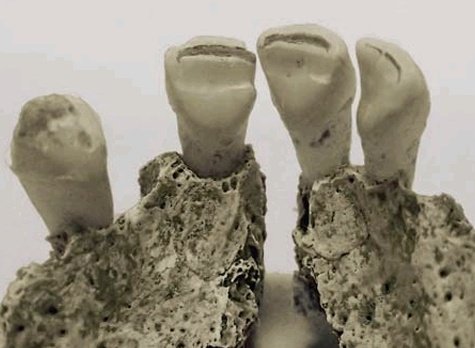
Then there were the signs of violence.
A number of adults showed signs of trauma from bladed weapons around the head - bashing, slicing or stabbing injuries, implying that warfare was not uncommon.
This man's skull shows a blade slice that would have killed him quickly.
A number of adults showed signs of trauma from bladed weapons around the head - bashing, slicing or stabbing injuries, implying that warfare was not uncommon.
This man's skull shows a blade slice that would have killed him quickly.
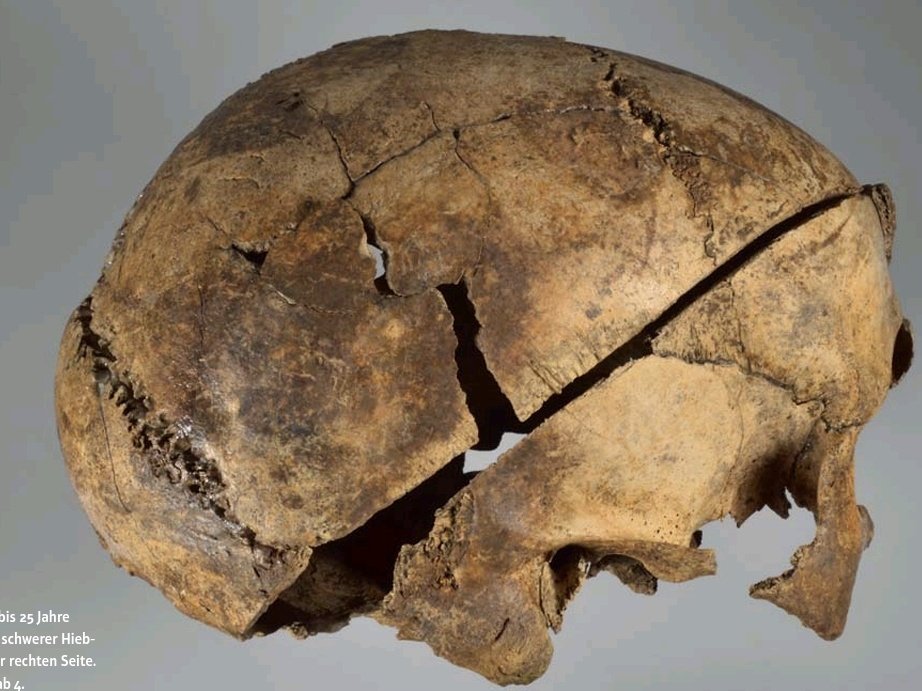
The picture I'm painting here, describing the physical remains, is of hard, rugged lives, spent toiling and suffering from malnutrition and disease. However, that's only half the story.
The Alamanni produced beautiful things.
The Alamanni produced beautiful things.
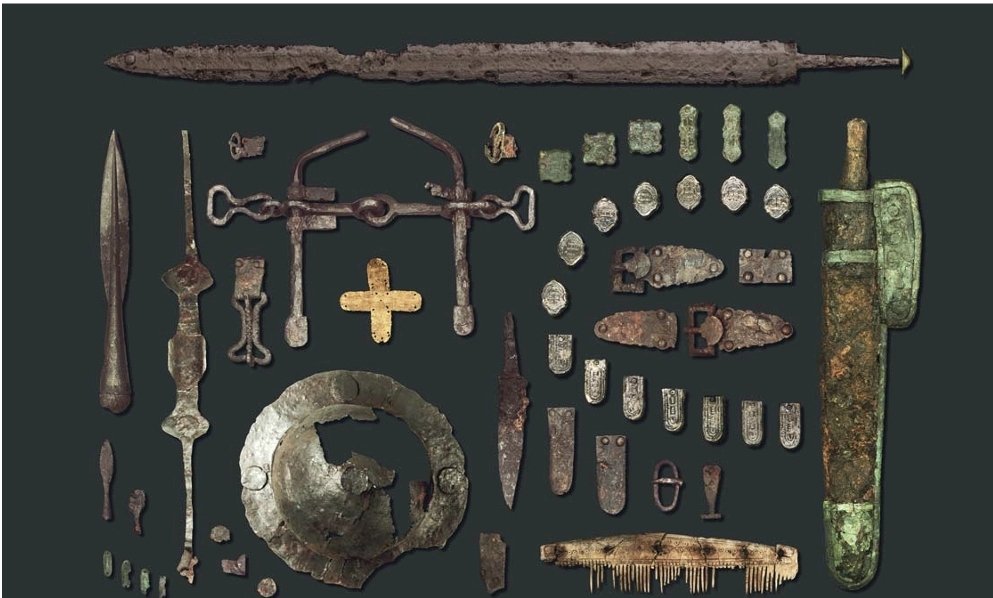
With two hundred years of grave, a real transition in terms of what was deposited with the dead took place.
One style of burial that I found particularly moving, was of the 'death bed' - this one is a reconstruction of the real one kept at @ALMkonstanz.
One style of burial that I found particularly moving, was of the 'death bed' - this one is a reconstruction of the real one kept at @ALMkonstanz.

Over time, Christian burials appeared, with shrouds in an otherwise earthen grave.
With some of the dead were interred gold crosses - among some of the first Christian symbols found in modern Germany, after the fall of Rome.
With some of the dead were interred gold crosses - among some of the first Christian symbols found in modern Germany, after the fall of Rome.

Men were buried with their swords, many of which have degraded over time, but changes in style can still be seen. 



Both women and men were buried with gold and precious jewelry. Stones came from all over Europe, pearls from even further.
Even during the 'Dark Ages', the world was connected, and luxury goods moving vast distances.



Even during the 'Dark Ages', the world was connected, and luxury goods moving vast distances.




Many women's graves contained 'Zierschieben', worn at the belt, or hanging from them.
Neo-Nazis have tried to adopt them as an ancient holy warrior symbol, but all the evidence says that just isn't true.


Neo-Nazis have tried to adopt them as an ancient holy warrior symbol, but all the evidence says that just isn't true.
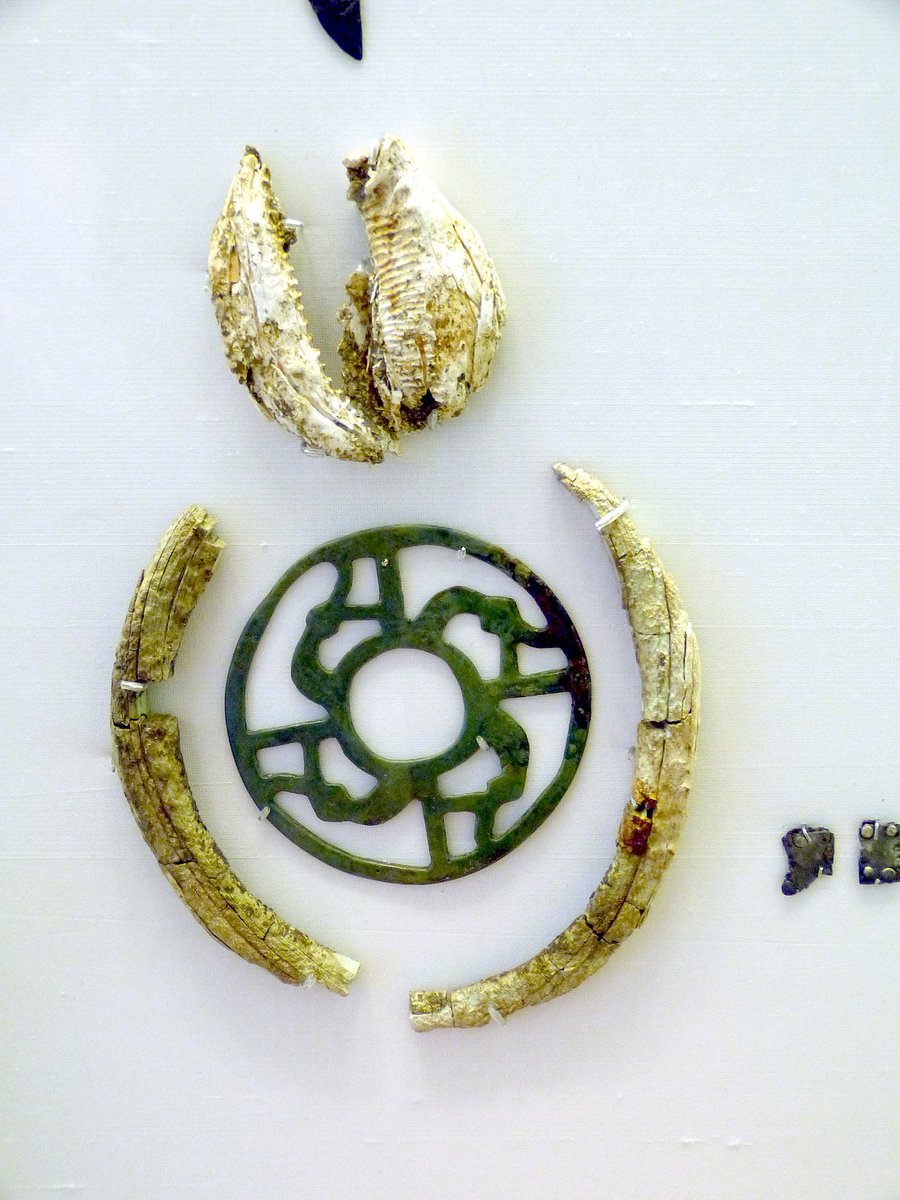

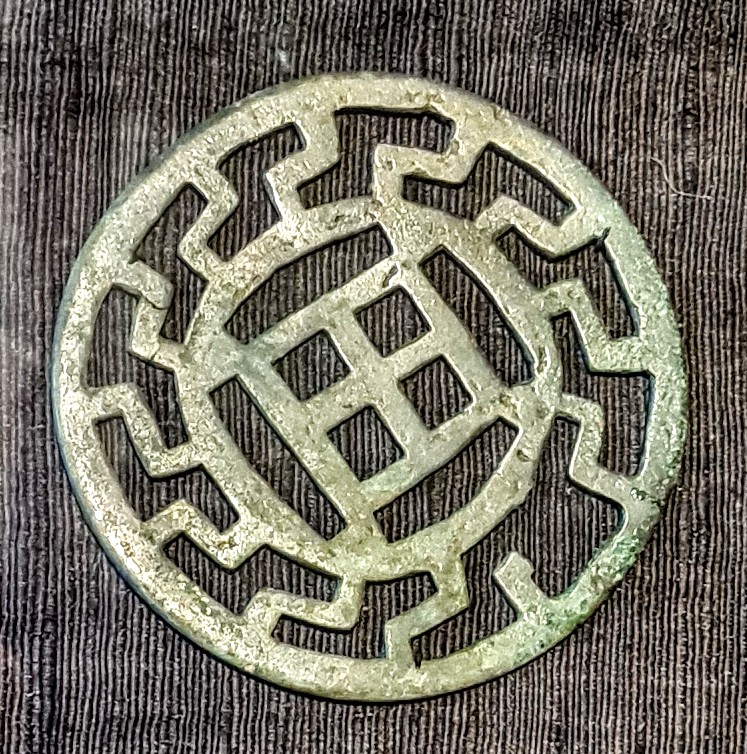
Rather than barbarians and savages, as historians of the past have depicted them, these Alamanni were a rather sophisticated people, with an eye for beauty and their own desire to both be remembered and to remember - hence their long-lived cemetery and the spectacular finds.
While many of the most amazing finds are kept at @ALMkonstanz or @LMWStuttgart, the @Alamannenmuseum in Ellwangen has a treasure trove of their own and tells the amazing story of the Alamanni of the area. 



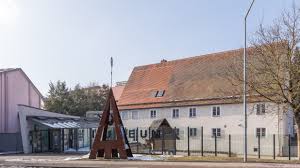



I spend a lot of my time reading about the lives of the people who made this part of Germany their home before me, but it's only when I visit places like the museum and come face to face with the artefacts that I feel a connection across the centuries - as if I'm by their graves. 

Over the next few months, I'll be writing more about the Alamanni, both here and elsewhere. I hope you'll join me.
Thanks for sticking with the thread, and I hope you enjoyed it.
There are so many world's that have vanished - it's such a privilege to explore them. /FIN
Thanks for sticking with the thread, and I hope you enjoyed it.
There are so many world's that have vanished - it's such a privilege to explore them. /FIN

• • •
Missing some Tweet in this thread? You can try to
force a refresh



















